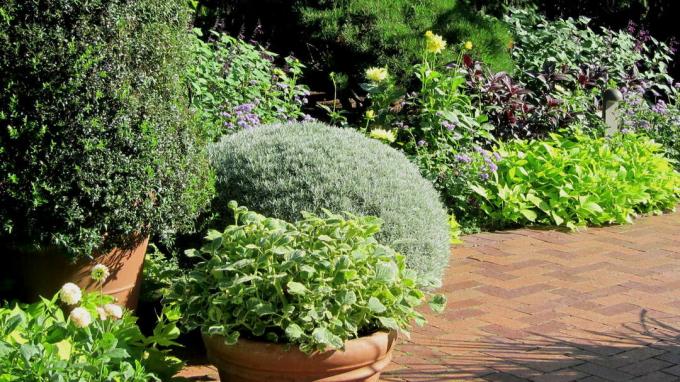In the cultivation of the curry herb, some questions are still unanswered for many. We answer how you can best care for the herbs in your own garden.

contents
- How is the curry herb poured correctly?
- How do you cut the curry herb correctly?
- How is the curry herb successfully overwintered?
How is the curry herb poured correctly?
Curry herb (Helichrysum italicum) is a Mediterranean herb that belongs to the daisy family (Asteraceae) heard. Due to its original roots in the warm and dry Mediterranean region, it usually copes well with longer periods of drought. Excessive watering and especially waterlogging can quickly damage the health of the roots. However, especially when growing in pots, it must be watered regularly on hot days. It is gentlest for the curry herb if it is done in the morning or evening hours and not in the blazing midday sun. In order to treat the plant as gently as possible, it is also advisable to water a little more often than to flood the entire pot with one watering. In order not to have to water too often, the container should be selected large enough - this is also more pleasant for the plant itself.
How do you cut the curry herb correctly?
The curry herb, which is also known as the Italian straw flower, is a perennial subshrub that can grow up to 70 cm. Subshrub means that the shoots lignify in the lower part. There are no more leaves growing here, the shoots are bare. So that this area does not gain the upper hand and the coveted aromatic leaves are only in the upper part of the plant, the shrub should be cut regularly. In the case of curry herbs, however, this can be combined with harvesting whole shoots for use in the kitchen. The shoots are cut off to just above the woody part of the plant. This also promotes the branching of the plant.
How is the curry herb successfully overwintered?
The curry herb is relatively hardy and robust compared to other Mediterranean herbs. But it is better to be on the safe side in order to bring the herb safely through the winter and to take protective measures against too low temperatures in winter. Plants that are grown in pots can be placed in a warm place. A slightly cooler winter garden would be ideal here thanks to the brightness. Specimens that are planted in the bed can be covered with rice or winter fleece. So they are guaranteed to survive the winter temperatures. In any case, the plants should not be cut back in autumn. The frost can penetrate well through the interfaces and the shoots become even shorter due to the frost damage. It is therefore better to wait until next spring with a shaping cut, if it is absolutely necessary and cannot be combined with the harvest.
More helpful pointers on how to Successfully plant curry herb in the garden we have provided for you here.

